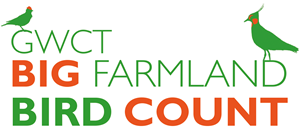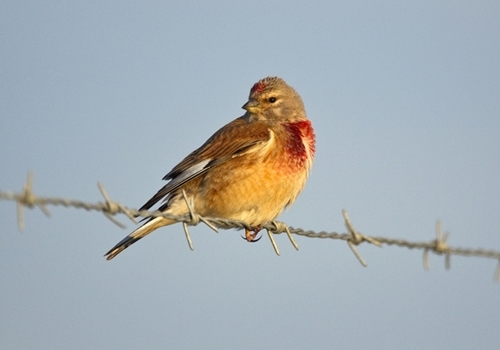 The results are in for the 2022 GWCT Big Farmland Bird Count. More than 1,900 farmers and land managers overcame challenging conditions to provide a vital snapshot of the health of our cherished farmland birds by taking part in the count, between 4-20 February.
The results are in for the 2022 GWCT Big Farmland Bird Count. More than 1,900 farmers and land managers overcame challenging conditions to provide a vital snapshot of the health of our cherished farmland birds by taking part in the count, between 4-20 February.
The weather did its best to hamper efforts with two major storms hitting during the count, but dedicated farmers and gamekeepers braved the conditions to spot 130 species across more than 1.5 million acres (607,000 hectares). Over 420,000 individual birds were counted in the survey organised by the Game & Wildlife Conservation Trust (GWCT), which is now in its ninth year.
An impressive 26 red-listed species were recorded, with seven amongst the 25 most frequently seen species. Of these, starlings, lapwings, fieldfares and linnets were the four most abundant red-listed species to be spotted, with over 125,000 counted, which equates to 29% of all species recorded.
The most commonly seen species were blackbirds and woodpigeons, sighted by over 71% of participants, while more than 63% saw robins, carrion crows and pheasants. The five most abundant birds seen were woodpigeons, starlings, lapwings, fieldfares and rooks: a total of 204,398 individuals, making up over 48% of the total number of birds counted.
View full results summary here >
 Linnets were amongst the most abundant red-listed species. (Photo credit: David Mason)
Linnets were amongst the most abundant red-listed species. (Photo credit: David Mason)
“The GWCT Big Farmland Bird Count shows that farmers are not only on the frontline of the country’s ever more important food security, but also its conservation efforts,” said Dr Roger Draycott, GWCT Head of Advisory, who co-ordinates the survey. “The count highlights the commitment of land managers to not only undertake farmland wildlife conservation measures, but also to record and evaluate the benefits of that vital work.”
The Big Farmland Bird Count was launched in 2014 to highlight the positive work done by farmers and gamekeepers in helping to reverse the decline in farmland bird numbers. The count offers a simple means of recording the effect of any conservation work carried out by land managers, such as scatter feeding birds through winter or growing crops specifically to provide seed for birds.
With an increased focus on delivering public goods in the government’s Environmental Land Management scheme, understanding what is on your land is increasingly important. 37% of participants are in some form of agri-environment scheme, demonstrating their long-term commitment to environmental management. 39% of those taking part were providing some form of extra seed feed for birds.
Farmers the length and breadth of the country joined the initiative, with every county in England represented. For the fourth year in a row the farmers and gamekeepers of Norfolk held the top spot for the number of counts returned, with 141 completing the survey. They were followed by Hampshire in second place with 80, North Yorkshire third with 78 and Wiltshire and Suffolk tied in fourth place with 75 counts each. There were responses from across Northern Ireland, Scotland and Wales.
The average farm size of those taking part was 948 acres (384 hectares), and included arable, livestock and dairy farms, alongside horticulture units, poultry and pig producers. The survey areas included important environmental features such as hedges, woodland edges, ponds, grass margins, wild bird cover, ditches and trees.
Roger commented: “Although the total numbers of participants is down a little after the extraordinary growth we saw in 2021 (up 65% in one year) we have continued to see a steady rise since we started the count in 2014, allowing us to build a vital picture of the health of our farmland bird species.
“I think this year’s dip is probably due to a combination of the dreadful weather in February, the nationwide lockdown during last year’s survey period which encouraged people to get out and count, and the unprecedented pressures currently facing farmers,” said Roger. “I would like to thank everyone who submitted a count return, as well as the NFU for sponsoring the GWCT Big Farmland Bird Count and the many organisations which support us in running it each year.
NFU President Minette Batters said: “I’m delighted that so many farmers responded to this year’s count despite the disruption of the stormy weather throughout February which hit the entire country.
“Although Britain’s farmers are focused on the importance of producing the nation’s food, they are passionate about protecting the countryside, and the results from the latest Big Farmland Bird Count provide a fantastic snapshot of the huge amount of work being carried out on our farms to encourage wildlife.”
Bird count spreads to Europe
2022’s count also saw land managers in Austria, Germany and the Czech Republic enthusiastically adopt this British initiative and return an impressive 300 counts between them. Austrian landowner and BFBC enthusiast Max Hardigg, said: “The reason why I promote the BFBC with such passion is because I am convinced that biodiversity is the right target for landowners and farmers. I believe that our farmland birds are a wonderful sign and reliable testimony of an agriculture that looks after nature. And I love the concept of dedicating 30 minutes to birds.
“Personally I thank the GWCT for this initiative. My aim is to roll out this new understanding for nature in Austria, Germany, Italy and the neighbouring CEE countries.”
View full results summary here >
Notes for editors:
The Game & Wildlife Conservation Trust – providing research-led conservation for a thriving countryside. The GWCT is an independent wildlife conservation charity which has carried out scientific research into Britain’s game and wildlife since the 1930s. We advise farmers and landowners on improving wildlife habitats. We employ 14 post-doctoral scientists and 50 other research staff with expertise in areas such as birds, insects, mammals, farming, fish and statistics. We undertake our own research as well as projects funded by contract and grant-aid from Government and private bodies.
* GWCT’s Big Farmland Bird Count is sponsored by the NFU and delivered in partnership with the Farmers Union of Wales, Ulster Farmers’ Union, NFU Cymru, NFU Scotland, Kings, CFE, FWAG, National Sheep Association, Camgrain, LEAF, the CLA and Perdix.
For information, contact:
Eleanor Williams
Telephone: 07592 025476